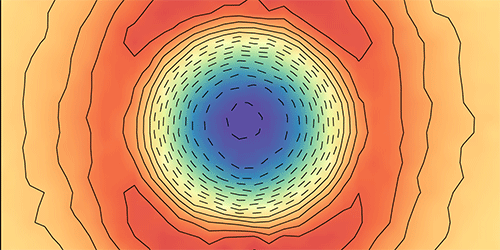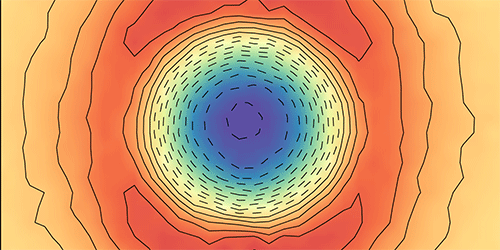Emptiness Constrains the Universe
Viewed on the scale of hundreds of millions of light years, galaxies in the Universe are clustered into sheets, filaments, and groups that are separated by relatively empty space known as cosmic voids. Now, a team led by Nico Hamaus at the Ludwig Maximilian University of Munich has studied the statistical distribution of galaxies around cosmic voids to constrain two key cosmological parameters that describe the Universe. Cosmological studies have largely neglected to collect such data from low-density regions like voids. But because galactic motion in these regions is less chaotic than in denser parts of the Universe, it can be more reliably modeled.
The team analyzed a galaxy map from the Sloan Digital Sky Survey to determine the spatial distributions of galaxies near cosmic voids. If the Universe is homogenous and isotropic (as physicists believe it to be), then the distribution of galaxies located parallel and perpendicular to the line of sight should be the same. But the researchers found differences between the two groups, even after correcting for the effects of galaxy motion. Knowing that such apparent distortions depend on the Universe’s history and geometry, they iteratively tested parameters in a model of the Universe’s expansion until the model described the observations.
Using this approach, Hamaus and his colleagues estimated the Universe’s average matter fraction and the growth rate of structure. They determined that the value of this latter parameter, which quantifies the strength of the gravitational force, agrees with expectations from general relativity. Their analysis provides a robust test of Einstein’s theory since deviations predicted by alternative models would be most pronounced in low-density environments.
This research is published in Physical Review Letters.
–Katherine Kornei
Katherine Kornei is a freelance writer based in Portland, Oregon.





